Muscle Chemistry Archive
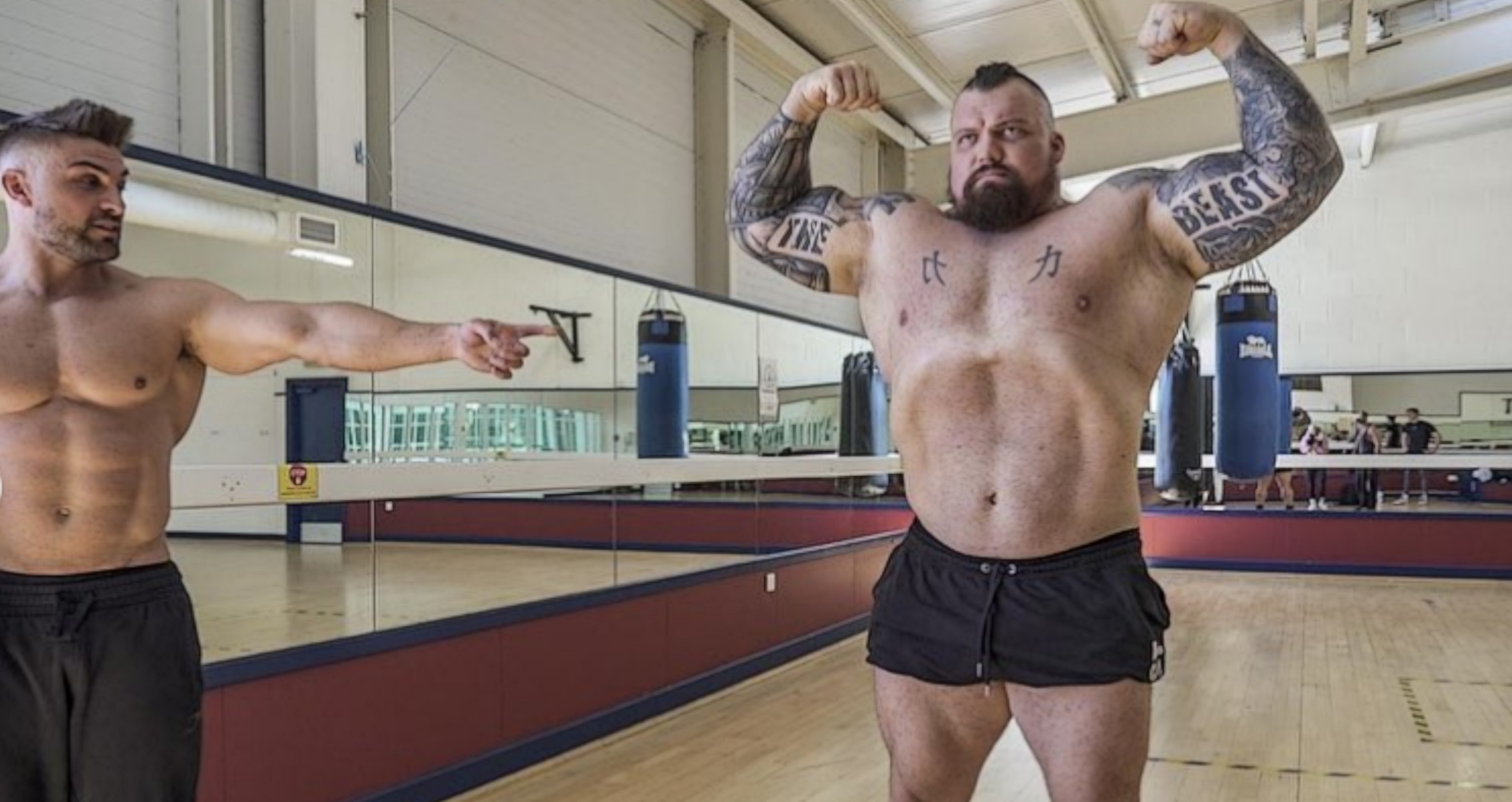
Eddie Hall Trains With Ryan Terry, Hits Vacuum Pose
Eddie Hall gets some posing tips from Ryan Terry.
Eddie Hall is an absolute beast of a man. He’s so extremely massive in fact he looks like he’s going to devour Ryan Terry in their recent training. “The Beast” has some lighthearted fun with Terry while doing some bodybuilding posing.
With so much of his time being spent training for his upcoming boxing match, you’d think Eddie Hall has no time for anything else. Hall recently collaborated with fellow UK strength athlete Ryan Terry to produce some interesting content.
During their training the two would eventually go pose for pose. Perhaps the most impressive part of the posing was that Eddie Hall had the ability to hit a vacuum pose. It’s a pose that many old school bodybuilders always utilized and some modern bodybuilders embrace. But for Hall to pull this off with a 300 plus pound physique is pretty impressive.
With the king of aesthetics @ryanjterry and must say what a sound bloke too ??Here’s me teaching him how to pose for maximum points, even got him to hit a vacuum ? ? ?
Eddie Hall certainly loves to joke around, but this display shows that if he put his mind to it he could really have a great stage presence. Will he become Mr. Olympia? Probably not. That said, he has the kind of muscle and the attitude to push himself to cultivate an impressive physique if he so chooses.
For more news and updates, follow Generation Iron on Facebook, Twitter, and Instagram.
Managing Editor at Generation Iron, Jonathan Salmon is a writer, martial arts instructor, and geek culture enthusiast. Check out his YouTube, Instagram, Twitter, Facebook, and Sound Cloud for in-depth MMA analysis.
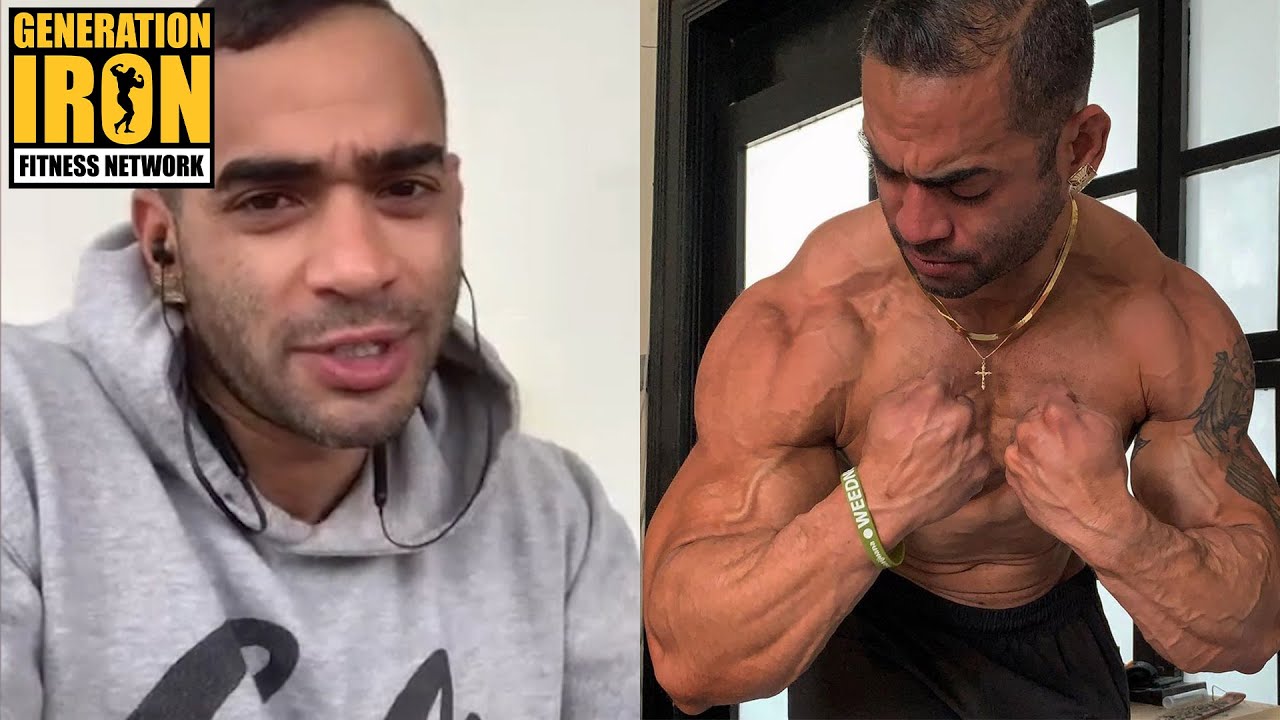
Jamie LeRoyce McTizic Recounts How Steroids Intensified His PTSD
Jamie LeRoyce McTizic talks about his dangerous experience with steroids and PTSD.
Jamie LeRoyce Mctizic is an all-natural bodybuilder. But his journey to becoming all natural was quite the roller coaster. He earned his IFBB pro card staying completely drug free. Upon becoming pro, he turned to steroids to further improve his physique. This led him down an intense path that led to instability and violence due to his PTSD. He took a break from bodybuilding, steroids, and has no returned all-natural and ready to make a big impression. In our latest GI Exclusive interview, Jamie LeRoyce McTizic details his experience with PTSD and how steroids intensified his diagnosis.
The last time we spoke with Jamie McTizic, we were producing a short digital film about his career and life as a bodybuilder. A lot has changed since then. He temporarily left competitive bodybuilding and did some soul searching after a rough few years. He’s now back, an all-natural bodybuilder, and looking to not only succeed in the sport but inspire young bodybuilders.
When we caught up with Jamie LeRoyce McTizic, we asked him about his all-natural status and also about his past few years of change in bodybuilding. Jamie has quite the whiplash in his bodybuilder career. He started out earning his pro card all-natural. He then turned to steroids as a pro to further improve. That’s when things started to take a turn for the worse.
Jamie LeRoyce McTizic is also a Navy veteran on top of being a bodybuilder. He suffers from PTSD and has been using medication to help keep it under control. But when steroids were added into his system, it intensified the PTSD, and led to his personality taking a massive shift.
[embedded content]
Watch our GI Exclusive segment with Jamie LeRoyce McTizic above!
He describes becoming a dangerously spontaneous person. He would make sudden and brash decisions without any thought. His temper was completely out of control and led to him becoming often angry and at times violent. He even briefly mentions having had physical altercations one too many times.
Not only that, but this turmoil also led to him having suicidal thoughts. In the moment, he couldn’t see just how far he had fallen. He thought that being a beast in the gym was what mattered most. He thought simply that many of the other people around him were not on his level. It’s only after coming off steroids, taking a break from bodybuilding, and reflecting on his past that he can see how far he slipped.
Now Jamie LeRoyce McTizic is all-natural and competing in bodybuilding again. He wants to use his past experience to help inspire up and coming bodybuilders. Inspire them to realize there are other paths in pro bodybuilding beyond turning towards drugs.
Jamie understands that not everyone, or perhaps even not many, will have the same volitile mental reaction to steroids as he did. But he does think that regardless of your mental state – steroid use does take a toll in one way or another. His goal now is to push to great success as a natural bodybuilder. To show what is possible without drugs – so that perhaps other athletes can go down the same path.
He’s concerned that many bodybuilders believe that steroids is the only way to succeed in bodybuilding. Others have stated just that in our own interviews here on the network. Jamie LeRoyce McTizic doesn’t believe that to be the case. He wants to be proof of that.
You can watch Jamie LeRoyce McTizic detail his past steroid use, PTSD, and his return to natural bodybuilding in our latest GI Exclusive interview segment above!
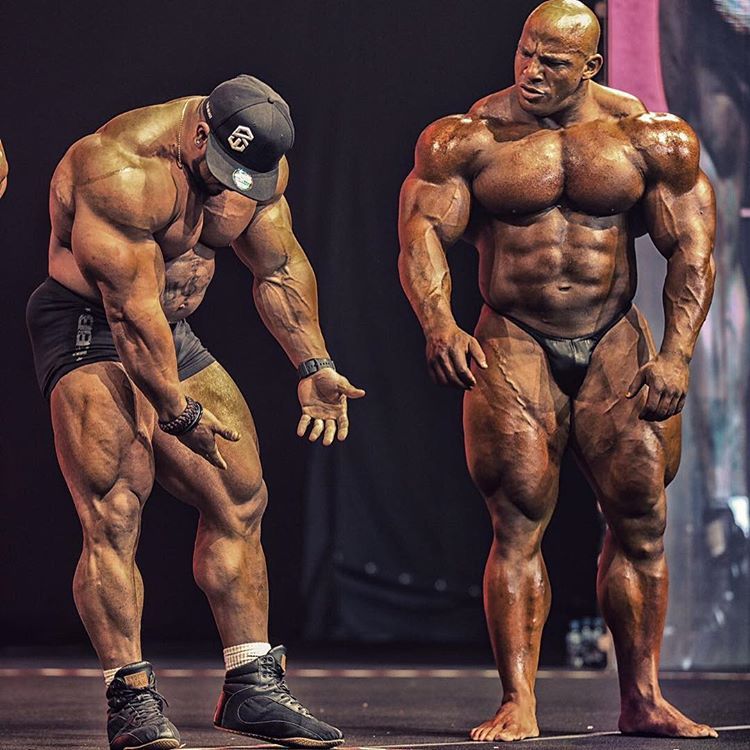
Roelly Winklaar on Big Ramy: Nobody Can Compare to Him
Roelly Winklaar gives Big Ramy high praise.
No one could have guessed that Mamdouh ‘Big Ramy’ Elssbiay would be the victor at the 2020 Olympia. So many were focused on the battle between Brandon Curry and the returning Phil Heath to see Big Ramy coming. But if you were to listen to Roelly Winklaar you would have known that Big Ramy was indeed a major threat to the title.
Having trained with Big Ramy extensively in the past, Roelly Winklaar has seen the 2020 Olympia champion up close and personal. The two have pushed each other to become bigger and stronger in their attempt to secure an Olympia victory. Big Ramy was about to make that dream come true and it comes as no surprise to Winklaar.
In a recent interview, Roelly Winklaar praised Big Ramy’s physique and stated why he thinks no one else compares to the 2020 Olympia champion.
“I think Ramy’s physique is big, and he was drier than everybody on stage,” said Winklaar “If he can come like that and drier, he can beat everybody again.
“I think if everybody is going to be sharp, it makes it more difficult for him. He was, that day, sharper than everybody. That’s why [he won]. He’s big, [nobody can compare] to him when he’s big and sharp.”
There’s no doubt that Big Ramy was truly impressive at the 2020 Olympia. Many believed he would never hold the title. There are many who even discount his victory because of his special invite. But both of those points are simply opinions. If a competitor steps on stage and looks better than everyone else, there’s no doubt they should win.
Roelly Winklaar believed that Big Ramy had what it takes to secure victory. The kind of package that Big Ramy presented at the 2020 Olympia was his best to date. But can he replicate that for next year’s show? We’ll have to wait and see.
What do you think of Roelly Winklaar and his comments about Big Ramy?
For more news and updates, follow Generation Iron on Facebook, Twitter, and Instagram.
Managing Editor at Generation Iron, Jonathan Salmon is a writer, martial arts instructor, and geek culture enthusiast. Check out his YouTube, Instagram, Twitter, Facebook, and Sound Cloud for in-depth MMA analysis.
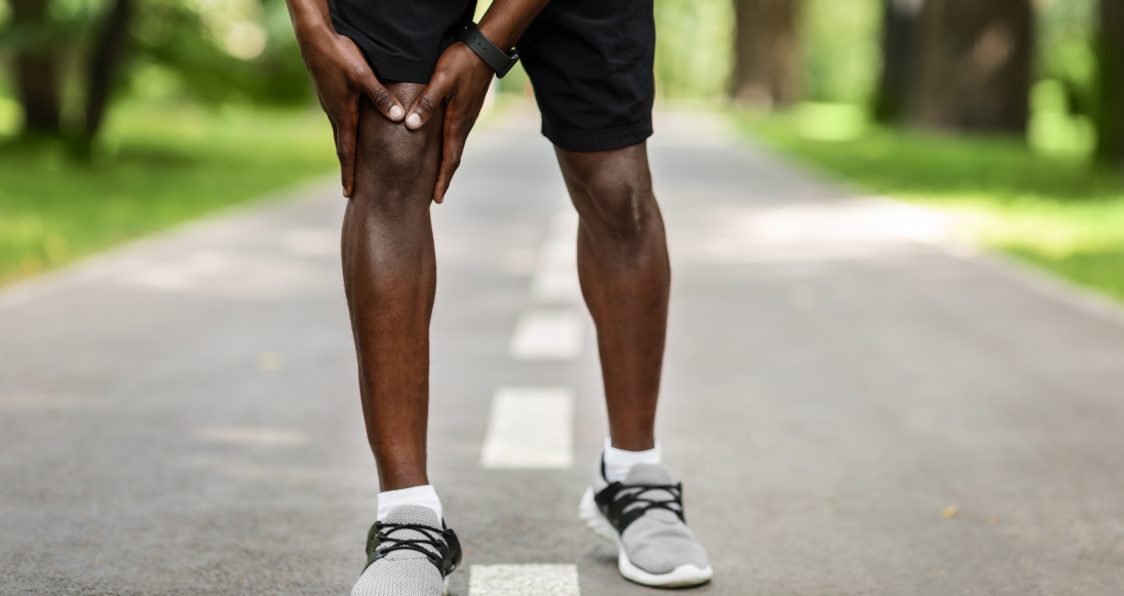
Is Muscle Soreness A Sign Of An Effective Workout?
Don’t let muscle soreness trick you into an inefficient workout.
We’ve all felt that achy pain that next morning after a tough workout. That unbearable pain in your quads, hamstrings, and glutes that screams at you to stay in bed. You feel good knowing that you put them through a grueling workout and that your gains will certainly show the next day. But muscle soreness may not be the best sign that you had an effective workout. After all, you should feel good after working hard, not stuck in an unbearable loop of lower body pain.
On the other hand, muscle soreness is not totally a bad thing. If it was, people wouldn’t push themselves to the point of that soreness. While it is highly debated in inner gym circles on whether muscle soreness is effective or not for big gains, the science behind it may sway you one way or the other. Knowing what muscle soreness comes from and how to prevent it, or promote it, may ultimately help you see the gains you wish to see in the gym.
What Is Muscle Soreness?
That sore muscle feeling is actually a result of something called delayed onset muscle soreness (DOMS). With the amount of stress put on your muscles, this creates small micro tears in the muscles which is a normal part of working out and also the rebuilding stage of the strengthening process to create new muscle (1). As a highly adaptive species, we as humans create this connection between our brain and body to alter how our level of strength and endurance allowing for growth in both to occur.
But those micro tears also cause inflammation which is where the muscle soreness comes from. DOMS forces your muscles to take a longer time to recover as a result of this mass amount of soreness which occurs. Your body seeks to aid in this inflammation by increasing blood flow and pumping your body with hormones and proteins to start to assist that healing (2).
The key when it comes to DOMS is that you can still see muscle growth without totally crushing yourself. You still create micro tears in the muscles with a “normal” lift and will see growth, as those have to repair. While it may not be as much growth as if you push yourself to the absolute limit, avoiding injury is your number one priority, so with that in mind, inflammation will certainly decrease as a result of not suffering from delayed onset muscle soreness.
This idea around muscle soreness is debated because proponents of it feel that every time you recover, your muscles become more dense and obviously stronger, so what’s the harm in that. Those against it see that you can still gain muscle without digging yourself into a hole every time and think that is the option. The most common theme of working out and exercise is that not one size fits all. It’s easy for us to want the simple answer that says something works better than something else, but it is all a preference. Knowing what works for the majority of people is a great start, but don’t jut run with the status quo. Work to find a plan for you so your gains and goals are met.
What Affects Your Level Of Soreness?
Your level of soreness is affected by a number of reasons. How often you train is key, for you must give your body ample recovery time. If you don’t allow those tears to fully heal, you run the risk of injury by pushing too hard. With regular activity, your muscles will get used to the load and much of that general soreness will subside.
You have to be careful of overtraining. Leading to fatigue and negative effects in your everyday life can be debilitating for work and relationships, so let those muscles fully heal and give your body time to recover (3). You will be able to boost intensity when you do this and allow for more efficient workouts.
Noticing what exercises you are doing can also allow you to zero in on muscle soreness. If there is an exercise you haven’t done before, you will be sore after so consider lighter weight to get those muscles used to how that works. Exercising that requires the lengthening of the muscle will also cause more soreness and these eccentric movements force your muscle to contract under tension bringing more strain and inflammation to the spot.
Tips To Decrease Muscle Soreness
We all hear the same words every time someone talks about muscle soreness, those being stretch, foam roll, massage, or ice. All of these things will help with DOMS as much as you may be tired of hearing it. By activating the muscle to increase blood blow, work out the tight spots to give you a better chance at recovery, and simply work to reduce inflammation will help with all levels of soreness (4). While you may not be able to totally rid your body of soreness, let it take its course as it heals those damaged muscles and give your body the proper care it needs.
Other helpful tips are to warm up and get your muscles primed for a workout. Going in cold and stiff will only hinder your gains and lead to potential injury. Starting with some sort of cardio works well because it raises blood flow and starts to bring vital elements like oxygen, protein, and iron to the muscle groups. Be sure to stay hydrated and allow for ample water to flow through your body and remove any unwanted toxins causing excess inflammation (5).
Wrap Up
Muscle soreness is just one part of working out that we all have to deal with. While some people hate feeling sore, others thrive on the pain that a good workout brought them. Delayed onset muscle soreness (DOMS) is the aftermath of a good workout as tiny muscle tears now seek to heal in order to see increased growth and improvement. While this is how those gains happen, it is important to be aware of your soreness level and to not totally overdo it to cause overtraining and unwanted fatigue. Take care of your body and it will take care of you, so while soreness can be a sign of effective workouts, knowing how hard and when to push your body is what to aim for.
Let us know what you think in the comments below. Also, be sure to follow Generation Iron on Facebook, Twitter, and Instagram.
*Images courtesy of Envato
References
Smith, Lucille L. (1992). “Causes of Delayed Onset Muscle Soreness and the Impact on Athletic Performance: A Review”. (source)
Miles, M. P.; Clarkson, P. M. (1994). “Exercise-induced muscle pain, soreness, and cramps”. (source)
Eichner, E. R. (2008). “Overtraining: Consequences and prevention”. (source)
Harvard Health Letter (2013). “The importance of stretching”. (source)
Cheung, Karoline; Hume, Patria; Maxwell, Linda (2003). “Delayed onset muscle soreness: treatment strategies and performance factors”. (source)
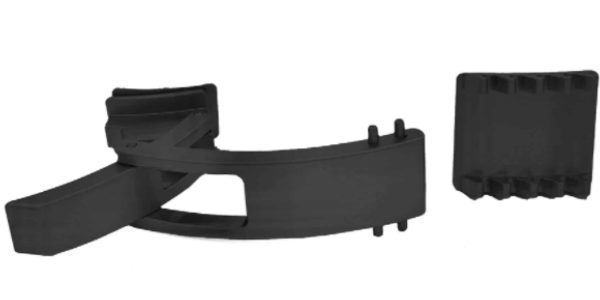
Pioneer Adjustable Lever Review For Tightness & Versatility
This product allows you to finely tune your tightness so you get the most of out of those big lifts.
Table of Contents
Product Overview
Finding the right lifting belt can be a challenge. How the belt fits is vital for your training and performance and with so many different companies producing lifting belts, the choices seem endless. We know we need them. For those of us lifting big weight and seeking to put up massive numbers, a weightlifting belt has become an essential to keep us strong, stable, and physically able to get work done. We’ve already checked out a great belt in Pioneer’s 13MM Weightlifting Belt, but Pioneer has created a great attachment to outfit your belt for the best tightness and versatility. Pioneer Adjustable Lever is a great attachment to optimize your ability to tighten your belt and provide for that much needed versatility you want most.
A weightlifting belt is designed to support your lower back and works to compress your core to keep a neutral spine. This alleviates any unwanted pain and potential injuries by keeping you more grounded and stable for whatever comes your way. By promoting better technique, a lifting belt can enhance the safety and effectiveness of all your lifts (1).
Shop at Pioneer
Pioneer is a division of General Leathercraft Manufacturing, Inc., a premiere company creating high-quality leather products including weightlifting belts and other exercise accessories and aids. With a great product line dedicated to assisting the needs of athletes everywhere, Pioneer has made it their mission to keep active individuals healthy and safe, especially as they lift big weight. Along with an amazing line of lifting belts, Pioneer also produces top tier knee wraps, wrist wraps, elbow wraps, and other equipment to keep athletes safe overall. Their mission is to provide great customer service and a product you will love to have and use. A company full of integrity and quality, Pioneer is a standout in the exercise equipment community.
Pioneer Adjustable Lever Highlights
Pioneer Adjustable Lever (PAL) was designed with the mindset that every half inch matters. This revolutionary product allows you to tighten your belt so it fits just right while also providing that versatility you need most. This patent pending attachment will retrofit most major brands and fits great with easy installment to alleviate any headache to you. The PAL works great with a stiff 10mm belt and will also work with most 13mm belts and if you have an older Pioneer belt, you can reach out to them for retrofitting instructions. This attachment is awesome for its ease and tightening capabilities while also using the same hole dimensions that other belts already have.
Why You Need This
Constantly having to tighten and loosen your belt can be an annoying hassle that throws you off your game. You should be able to enjoy a workout and not be stuck fiddling with a lifting belt. What this lever does is allows for easy adjustments so you can make those quick changes you want most. Maybe you like a looser belt squatting and a more tight fit when deadlifting. This lever allows you to jump from exercise to exercise with quick adjustments so you never waste any time in the gym. Perfect for those who powerlift or regularly use a lifting belt, the PAL is what you need to keep your workouts moving efficiently.
How It Works
When it comes to installing the PAL, it is simple and convenient for you. Taking your existing belt, you will basically take both parts of the PAL and line up the respective holes with those on the belt. After some quick tightening of the screws, you will able to use this lever effectively and with no hassle to you.
What makes the PAL so great is that is adjusts to ½’’ tightness settings, allowing you to get more specific with your fit. A quick lift of the lever and you can adjust this belt in seconds. Two prongs will lock into the other side of the lever for a secure and safe fit and it allows you to inch your way back and forth with ease.
Price & Effectiveness
Pioneer Adjustable Lever (PAL) is a great attachment that works with most belts and can provide comfort and ease for optimal tightness and versatility. It is USPA approved and has been in the works for quite a while. Pioneer is excited about the launch of the PAL as they know it will really work for you.
Pros: High quality product with great durability and easy installment. Working with ½’’ settings gives you the best chance at the most comfortable fit. From a reputable company in Pioneer who produces great lifting products for those who lift big.
Cons: May not fit on all belts, so it would be smart to double check that.
Price: $65.95
Check out our review for Pioneer 13MM Pioneer Cut Weightlifting Belt here!
Wrap Up
Pioneer Adjustable Lever (PAL) is that attachment you need today to maximize the effectiveness of your belt and offer the best chance at finding the right fit. Working with ½’’ tightness settings and providing the chance to adjust the tightness with ease is something this patent pending product brings to you. Pioneer is a great company who produces high quality lifting equipment for those serious about gains and lifting big. What you are really getting is a revolutionary product made for your benefit to optimize comfort from a company who prides themselves on high quality products. Check out Pioneer Adjustable Lever today and see how this can change your lifts for the better.
Try Pioneer Adjustable Lever Today
Generation Iron may receive commissions on purchases made through our links. See our disclosure page for more information.
Let us know what you think in the comments below. Also, be sure to follow Generation Iron on Facebook, Twitter, and Instagram.
*Images courtesy of Pioneer and Envato
References
Finnie, S. B.; Wheeldon, T. J.; Hensrud, D. D.; Dahm, D. L.; Smith, J. (2002). “Weight Lifting Belts: Motivations For Use”. (source)
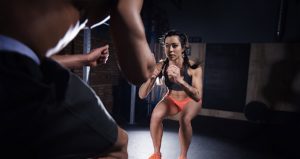
3 Of The Best Bodyweight Workouts You Can Do From Home
Home Workouts To Build Full-Body Strength
Bodyweight training, or calisthenics, is often seen as inferior to attending the gym. However, using your bodyweight is one of the best resistance tools that you have access to.
Not only are bodyweight workouts highly convenient, but they also have the potential to bring about a number of changes in strength and fitness.
Although many see bodyweight training as being restrictive, there are a great number of effective bodyweight exercises that can be performed.
This article will cover three bodyweight workouts that will produce a training effect and lead to an increase in strength.
The Three Home Workouts
Each of the following workouts uses only bodyweight and a mode of training known as pyramid training.
By performing the three workouts, all the muscles of the body will be exposed to a training stimulus which will cause a full-body adaptation.
Leg Day
Squat and lunges are obvious inclusions in the leg day bodyweight workout. The addition of jumping jacks and glute bridges help to comprehensively work all muscles of the legs.
In order to replicate an intense leg session at the gym, all of the exercises are high in volume and performed back-to-back.
The Workout
2 rounds:– 50 body squats (conventional stance)– 25 body reverse lunges (per side)– 50 body squats (wide stance)– 25 body lateral lunges (per side)– 25 jumping jacks– 25 glute bridges
Completing the two rounds will involve performing four-hundred reps which is a large volume of work. Upon completing the two rounds, if you feel like you have more to give, perform a third round.
Be aware that there is no time limit; therefore, take your time with each exercise, focus on your form, and add in short breaks if necessary.
Training Tips
For the squats, lunges, and glute bridges, it is important to drive through your heels as much as possible. This will promote stability and safety while also activating the correct musculature.
If you are training barefoot, look to grip the floor with your feet during the eccentric (lowering) phase. Once again, this can enhance stability and ensure that the knees follow proper alignment.
During all of the exercises, focus on maintaining a core brace. To do this, squeeze the abdominal muscles as tightly as possible.
If you seek to make this workout harder, keep your upper body vertical for all of the standing exercises.
For the lunges, step back rather than forwards and for the lateral lunges, keep the working leg planted and slide the other leg out to the side.
As well as allowing the workout to be completed in a smaller space, doing this will increase the amount of tension placed on the quads.
Push Day
The ultimate bodyweight pushing exercise is the push-up. Therefore, it should not be a surprise that this workout revolves around push-ups.
The push-up is an exercise that is commonly completed incorrectly. Therefore, take care with the exercise and control the movement to ensure that you perform it safely and effectively.
The Workout
4 rounds:– 8 push-ups– 20-second plank– 8 body skull crushers– 4 diamond push-ups– 20-second bear crawl static hold– 8 push-ups
This workout involves a lot of time under tension and a high volume of work. Both of these things will contribute to significant fatigue and a great chest pump!
Between each round ensure that you fully rest for three minutes. Use the time to stretch out the wrists and get the breathing under control.
As with the previous workout, there is no specific time that you must achieve. Once again, avoid rushing through the workout and take breaks if you must.
Training Tips
When performing the push-up or any pressing variation, it is vital that the shoulders are pulled back and down. Allowing them to rise up will increase the risk of experiencing an injury.
As your chest drops down to the floor, ensure that the elbows stay tight to the body. Allowing the elbows to flare out. Not only is this less efficient it can also lead to injury.
Finally, engaging the core throughout the push-up may allow for a more efficient push-up as it will prevent the hips from rising up or sagging and hold the body in a solid, stable position.
Often the amount of core strength and stability required for a push-up is overlooked. To maximize the demand on the core, do not let the knees touch the floor during a round.
Core Clock
For the core clock workout, you need to imagine that a large clock has been drawn on the floor. Each number on the clock is the number of seconds or reps to be performed.
Once you have completed the first number, you align the body with the number and complete the reps. Continue in this fashion until you have moved all the way around the clock.
For example, for the core clock mountain climbers, you will start at twelve o’clock. Therefore, set up in line with twelve on the clock and perform twelve repetitions.
Once this has been completed, immediately move the body round to 1 o’clock and complete one rep. Repeat this process until you have moved the entire way around the clock.
The Workout
3 rounds:– Core clock mountain climbers– Core clock plank to pikes– Rest for two minutes– Core clock ab rollouts
There is no denying that this workout will test your core strength, endurance, and stability. Due to the challenge of the core clock, the rest is scheduled mid-round rather than at the end.
During the workout, it is crucial that the core stays engaged. Therefore, if you feel that core tightness has been lost and your hips begin to sag or hike, take a short break.
Be aware that the plank to pikes and the ab rollouts require equipment – core sliders and an ab roller. Don’t worry if you don’t have either of these as paper plates will do the same job.
Training Tips
Some people do not enjoy the idea of core training. However, when we consider what the core does, it is crucial that we develop core strength.
Often the core is misunderstood as being just the abdominals. While the abs are part of the core, the core is essentially all of the muscles of the trunk of the body.
These muscles work together to provide stability and protect many important structures such as the spine and internal organs.
A lot of core workouts can be monotonous, therefore, although challenging, this workout is designed to be an enjoyable drill that freshens up core training.
One of the best things about the core clock is that it allows you to use a wide range of different bodyweight exercises and provides you with a goal to accomplish.
Avoid the temptation to rush through the core clock. Instead, prioritize slow and controlled movements to highly activate the core muscles and get the most out of the workout.
Final Word
While being unable to attend the gym or access any fitness equipment is perhaps less than ideal, bodyweight training is an excellent method of strength training. By regularly performing the three workouts listed in this article, you can effectively maintain and build full-body strength.
For more news and updates, follow Generation Iron on Facebook, Twitter, and Instagram.
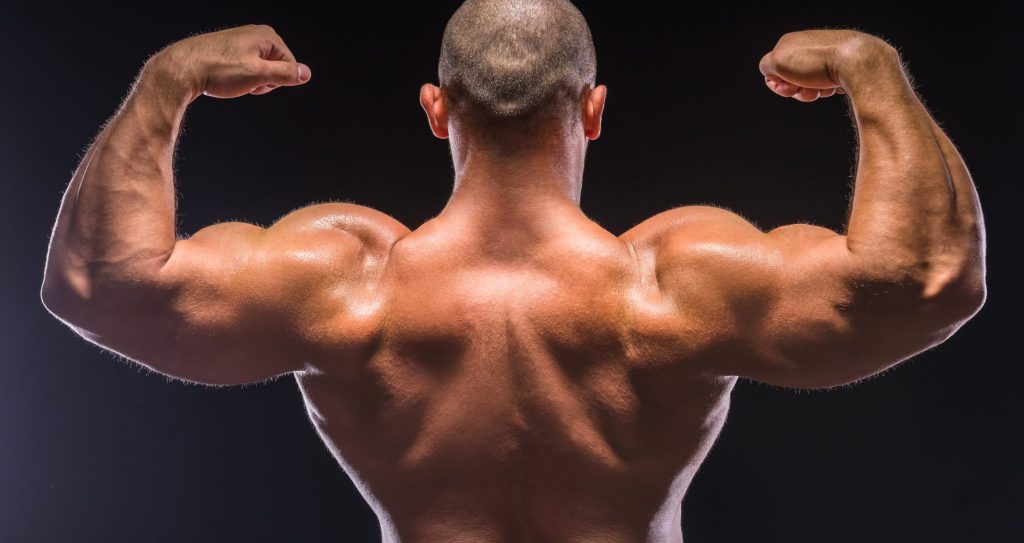
The Ultimate Guide to a Ripped Back
If you’re like a lot of men, you might be overtraining the muscles that “show” the most or be focusing the most on the exercises that give you the most respect in the gym, aka bench press. While a strong and broad chest is definitely worth achieving, you don’t want to place more attention on the anterior side of your body than your back. This can lead to a weaker developed physique and an increased risk of injury.
Building a strong, broad back goes far beyond improving your aesthetics.
Keep reading to find out how to get a ripped back and why it’s important.
Reasons It’s Important to Build a Strong Back
Aides in Daily Tasks
Your back muscles are important for not only improving your physique but also in a lot of daily tasks. Your lower back aids in lifting, carrying, and supporting your upright posture, and your upper back is responsible for supporting your shoulder girdle, head, and neck.
Improves Your Body Composition
After your legs, your back contains the largest muscles in the body, so training these muscles expend a lot of energy and will improve your body composition.
Having a ripped and broad back will not only make it look good and strong, but you’ll make your physique look better. That’s because a broad back will make your shoulders look wider and give you a V-shaped look, which is a sign of physical attractiveness in males (1).
Correct Your Posture
Although it’s impossible to grow taller, working your back muscles will fix your posture, making you stand taller.
And I know a lot of men out there want to build the strongest and biggest chest possible, but you’re costing yourself muscle if you only focus on your chest. The stronger your back muscles are, the more weight you’ll be able to do on chest exercises. They help stabilize your shoulder joints, which will allow you to lift more.
Prevent Muscular Imbalances
Furthermore, since many men focus too much attention on their chest muscles, this often leads to muscular imbalances. If you’re working your push muscles a lot more than your pull muscles, your much more likely to injure yourself. If you have a desk job and sit behind a computer for most of your day, it’s actually recommended that you focus a little more on pull movements than push movements. This will help keep your shoulders from protracting forward and other muscular imbalances.
In fact, a 2019 study of employees found that at least 75 percent of call center workers were in back pain (2).
Lower back pain is common, especially as we get older so it’s important to strengthen your lower back muscles (3).
Plus, many sports such as rock climbing, swimming, and boxing, rely heavily on the development of your back muscles.
As an added bonus, you’ll develop bigger and toner arms by training your back. That’s because you work your biceps as a secondary muscle on many back movements.
Back Muscles, Exercises, Reps, and Sets
Back Muscles
The back is composed of a few key muscles:
Latissmus Dorsi (responsible for the v-shape) – the outer back muscle that forms the “wing” shape
Rhomboids – located in the midsection of your upper back and used to pull your shoulder blades together
Trapezius – large triangular muscles extending over the back of your neck
Erector Spinae – runs vertically along your spinal vertebrae and straightens the back and provides side-to-side rotation
Therefore, you’ll want to focus on exercises that target these muscles when trying to build a ripped back.
Exercises
Weighted Pull Ups
Weighted calisthenics is a measure of one’s true relative strength. When you’re doing pull-ups, you have to lift up deadweight fighting against gravity — it’s very taxing, to say the least. Now, imagine throwing weight on top of your bodyweight. This will build you the strong and chiseled back you want.
Barbell Bent-over Row
This is a classic compound movement that’s a cornerstone in back workouts for a reason. You’ll load a barbell full of weight, which will allow you to use heavier weights to build strong back muscles.
Lat Pulldown
The name speaks for itself, but the lat pulldown is designed to specifically target your latissimus dorsi. You’ll do this exercise on a cable machine, and it allows you to overload your lats without tiring out your arms.
Dumbbell Single-arm Row
The dumbbell row is designed to isolate your lat muscles to give them more volume. They’ll also improve your core stability.
Dumbbell Pullover
The dumbbell pullover is a good exercise that not only targets your back but also hits your chest and triceps. Sports physiologists and researchers have also noted its effectiveness in good posture (4). You might recognize this movement from Arnold Schwarzenegger, as it was one of his staple bodybuilding movements.
Reps and Sets
To build a ripped back, you’ll want to make sure you’re doing the right volume for adequate muscle growth. Certain movements are better with lower reps and more weight, while others are better with a little lighter weight and a few more reps.
For example, with weighted calisthenics — e.g. weighted pull ups. — I recommend heavier weights and sticking in a lower rep range. A big compound movement such as barbell bent-over row is another exercise I recommend that you keep the weight heavy and reps low. That’s because these movements are built for strength, and your lats will pop if you overload them with enough weight on the right movements.
On exercises such as dumbbell single arm row and dumbbell pullover, you can lower the weight a little bit and increase the reps slightly. The biomechanical makeup of these movements isn’t meant for the same taxing weight as the ones mentioned above. They’re mainly for volume and to add some more definition to your back muscles. Going too heavy on these movements will cause you to use bad form and risk injury.
Example Back Workout
Weighted pull ups 3 sets x 5-8 reps
Barbell bent over row 3 sets x 5-8 reps
Lat pulldown 3 sets x 8-10 reps
Dumbbell single-arm row 2 sets x 8-10 reps
Dumbbell pullover 2 sets x 8-10 reps
Body Fat Percentage
It’s worth mentioning that in order for your back muscles to truly shine, you’ll want to make sure you’re a lower body fat percentage. Aim for 8-12% body fat if you want your back to be ripped and to really make your back muscles pop, but anything under 15% will show them off.
Recap
Having a strong, broad back is often overlooked by the chest muscles. However, a chiseled back will give you the V-shape physique you desire and will also make you overall stronger and prevent injury. Try some of the exercises laid out in this article, and you’ll be well on your way to a ripped back.
What’s your favorite back exercise? Let us know and follow us on Instagram, Facebook, and Twitter.
References
1 – Braun, M. F., & Bryan, A. (2006). Female waist-to-hip and male waist-to-shoulder ratios as determinants of romantic partner desirability. Journal of Social and Personal Relationships, 23(5), 805–819. https://doi.org/10.1177/0265407506068264
2 – Bontrup, C., Taylor, W. R., Fliesser, M., Visscher, R., Green, T., Wippert, P. M., & Zemp, R. (2019). Low back pain and its relationship with sitting behaviour among sedentary office workers. Applied ergonomics, 81, 102894. https://doi.org/10.1016/j.apergo.2019.102894
3 – Meucci, R. D., Fassa, A. G., & Faria, N. M. (2015). Prevalence of chronic low back pain: systematic review. Revista de saude publica, 49, 1. https://doi.org/10.1590/S0034-8910.2015049005874
4 – Nucharapon Liangruenrom, Kanyapat Suttikasem, Melinda Craike, et al. Physical activity and sedentary behaviour research in Thailand: a systematic scoping review. BMC Public Health. 2018, Vol.18, No.1,
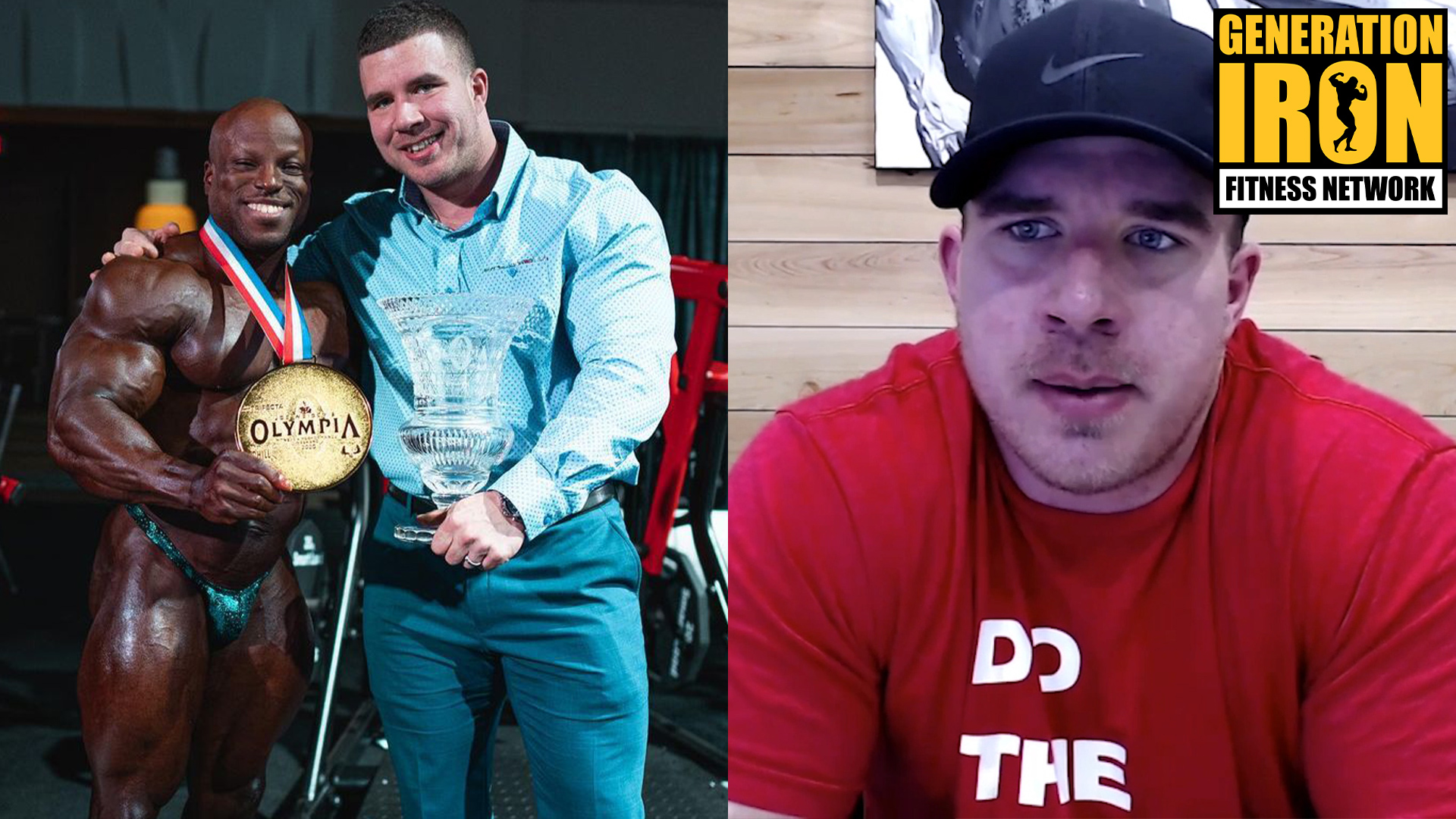
INTERVIEW: Matt Jansen’s Passion For Bodybuilding Was Never To Be Coined A “Guru”
Matt Jansen explains why his goal with coaching in bodybuilding was never to be called a guru.
In bodybuilding there is a term for certain high profile coaches. That term is guru and is often thrown around a lot. Sometimes, to some people, it’s used to liberally to describe all bodybuilding coaches. Matt Jansen is a bodybuilding coach who prefers to avoid using the term guru. In our latest GI Exclusive interview, Matt Jansen explains why he doesn’t want to be called a guru and what his methods are for success in coaching.
Matt Jansen is a bodybuilding coach that wants you to know he has no problem with people using the term guru. But he also would prefer to not call himself a guru personally. The reason? He understands the passion that goes into the sport – and why many would use the term guru to coaches they admire. But for Jansen, coaching is a life long endeavor of learning. He’s a student himself and would never want to consider himself a “master” of sorts.
Of course, many people would consider Matt Jansen a master. He’s a successful bodybuilding coach in the industry and one that many athletes trust. A huge part of that is the relationships that Jansen forms with his clients.
Matt Jansen doesn’t consider coaching in bodybuilding as just a job. He understands that success as a coach means more than just knowing the right training routines and diet plans. It’s also about forging a connection with the athlete. The closer and deeper you know a client, the more you can gain insight into their mindset and how their body works. It builds a strong bond and trust that allows for more candid conversation. That can lead to better results.
[embedded content]
Watch our latest GI Exclusive segment with Matt Jansen above!
When Matt Jansen is called a guru – he tends to avoid the term. That’s because he thinks it has a “know it all” feeling behind it. Jansen believes that he is constantly learning as a coach. He learns from the different athletes he works with. He learns from the new concepts and knowledge he studies year after year. Like the old saying goes – a true master is a life long student.
The number one goal for a coach, Matt Jansen believes, is effective communication. It’s key towards ensuring that both coach and athlete are on the same page and work towards success. A coach cannot be successful without an athlete. And an athlete might owe a lot of success to their coach’s insights. Jansen points out that effective communication is key in any relationship. So why would that not be true for coaches and their athletes?
“I think that every coach is given their opportunity by somebody.” Matt Jansen states in our interview. What he means by that is – a coach isn’t simply great by design. They are great due to the athletes that put their trust in a coach. Jansen feels grateful that he was able to start coaching with some truly genetically gifted athletes. Those athletes eventually went pro. That helped him build a bigger roster of athletes.
Of course, Matt Jansen will stand behind his passion and knowledge as a coach. But he also is humble in understanding that his success is not simply because he’s a master or a guru. It’s because of the relationships he forged with athletes. How they trusted him. How he trusted them. And that helped lead to his success.
You can watch Matt Jansen talk more about his beginnings as a coach and his tactics in our latest GI Exclusive interview segment above!
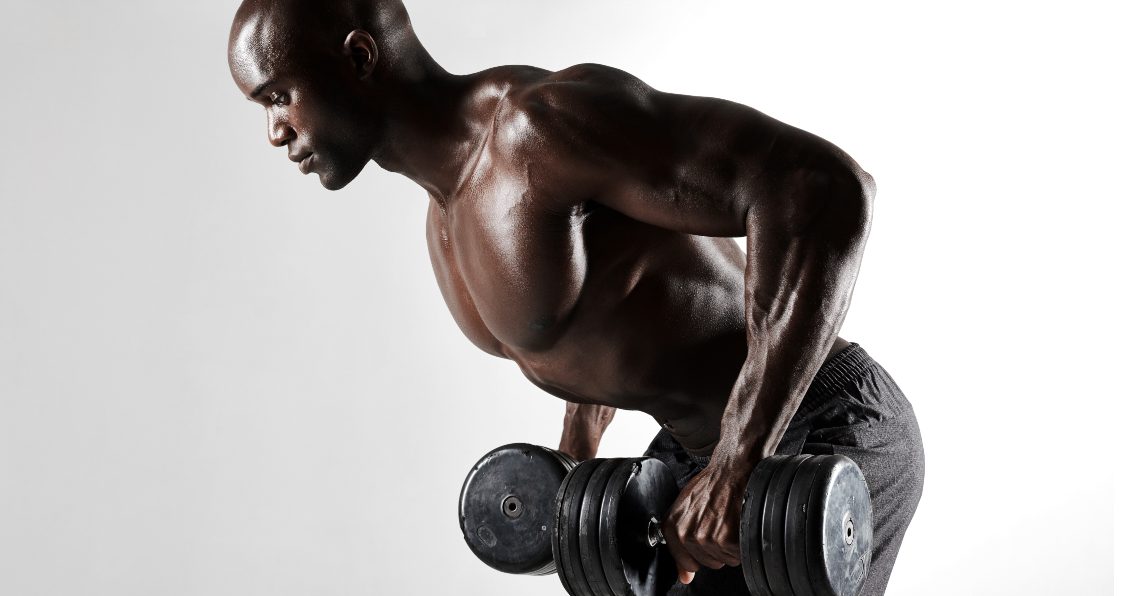
How The Kickback Exercise Boosts Triceps Growth
Zero in on that horseshoe-shape with this stellar exercise.
For those of us looking to get those bulging arms, doing curls just won’t cut it. We all know we need a balance of triceps and biceps exercises in our arm day routine, but working that triceps muscle can be harder than it seems. A lot of people tend to make the mistake of only working their biceps, really pumping away at all sorts of those exercises we know and love. But the neglect of your triceps is foolish and will show in the long run. You need the right triceps exercises to see solid arm development and the kickback exercise can do just that.
Your triceps are made up of three heads being the long, lateral, and medial. For total overall development, each needs to be worked effectively and in combination with isolation and compound exercises. The benefits to strong triceps can be anything from that desired aesthetic, to rounding out your upper body and its development, down to injury prevention as even one weak muscle can have negative effects on your gains. The kickback exercise is an isolation exercise that can really target that growth you want most.
In this guide to the triceps kickback exercise, we’ll dive into what it is, the muscles worked, and the many benefits associated with it, mainly towards your triceps growth and that desired horseshoe-shape. How to perform it is simple yet effective and this exercise can transform your arms into some serious works of art.
What Are Kickbacks?
Kickbacks are a triceps isolation exercise that really works to build strength and size, as well as rounding out that horseshoe-shape to make your arms pop. As an important muscle for moving your elbows, shoulders, and forearms, your triceps need the proper exercise to really feel a need to grow. Kickbacks are that exercise to build strength and work to stabilize the triceps muscle for anything from sport specific movements to something more functional. For all things strength, size, and aesthetic, look no further than the triceps kickbacks for everything you need.
Muscles Worked
As an isolation exercise, kickbacks work your triceps beyond belief and offer a great exercise to solely target this often overlooked muscle. Increasing the triceps muscle can provide for a host of benefits including stability, flexibility, and increases in range of motion. While there are certainly some other smaller muscles working with you on this exercise, it is important to know that this is mainly an isolation exercise and one worth doing for triceps growth.
Benefits Of Triceps Kickbacks
The benefits of kickbacks are linked to the benefits of having strong triceps. You want the best out of your exercises because your training deserves it and your performance results require it. Don’t sell yourself short with some lackluster exercise and heavily consider adding kickbacks into your routine. As a simple and effective exercise, there should be no conversation about if this should be in your workout, but rather, when is the first day you’re going to add it into your workout.
Benefits of kickbacks include:
Increased Strength
As an isolation exercise, your triceps get full attention to get serious work done to build strength and size. The benefit of an isolation exercise is that you aren’t tiring out other muscle groups and are really only focusing on that one muscle you want to focus on most. A strong triceps muscle will really work for your benefit in more ways than one and even something like mind-muscle connection can take effect to build more strength (1).
Stability To Shoulders & Arms
As a large muscle in the arm, having strong triceps will provide that much needed stability to aid in big lifts and other functional movements. Stability allows us to focus on what we’re doing as opposed to being so caught up with making sure we don’t get injured. With good stability, we remain grounded and strong, either in the upper or lower body.
Make That Physique Pop
A strong triceps muscle can help create that horseshoe-shaped arm people will envy wherever you go. Having bulging biceps is only half the battle and you need to focus on both the triceps and biceps in order to see the growth you want most. You work hard for that physique so maximize your gains and don’t settle for anything less.
Other Benefits
Less stress on the wrists: Your wrists stay in one position so there’s less stress and strain to cause unwanted pain.
Improve flexibility: Don’t restrict yourself and limit what you can and can’t do when it comes to movement.
Injury prevention: Avoid muscle imbalances and avoid unwanted pain that can result in an injury keeping you out of the gym (2).
How To Perform It
Here are the steps for performing the kickbacks exercise.
Stand with your feet around shoulder-width apart. Grab a pair of dumbbells and hold them with your palms facing each other. As you hinge over at the waist, keep your core engaged and make sure your back is parallel to the floor. With the dumbbells at your chest, bend them so they are at a 90-degree angle and fully extend your arms behind you. Give those triceps a squeeze at the top (once fully extended) and lower back to the starting position. Repeat for your desired number of reps.
Wrap Up
The triceps kickback exercise is a great isolation exercise to target your triceps so your growth and that horseshoe-shape come to life. The benefit of strong triceps goes far beyond just looking good, for they provide stabilization, injury prevention, and of course, the added bonus of that amazing physique. Look to add the kickbacks exercise into your routine to ensure you never neglect those triceps again. While doing biceps curls and working on those arms may seem easy, you really need to focus on balancing out those biceps and triceps exercises. You work hard and it should show, so don’t waste your time and add this amazing exercise into your routine today.
Let us know what you think in the comments below. Also, be sure to follow Generation Iron on Facebook, Twitter, and Instagram.
*Images courtesy of Envato
References
Calatayud, Joaquin; Vinstrup, Jonas; Jakobsen, Markus D.; Sundstrup, Emil; et al. (2017). “Mind-muscle connection training principle: influence of muscle strength and training experience during a pushing movement”. (source)
Pierce, Troy D.; Herndon, James H. (1998). “The Triceps Preserving Approach to Total Elbow Arthroplasty”. (source)
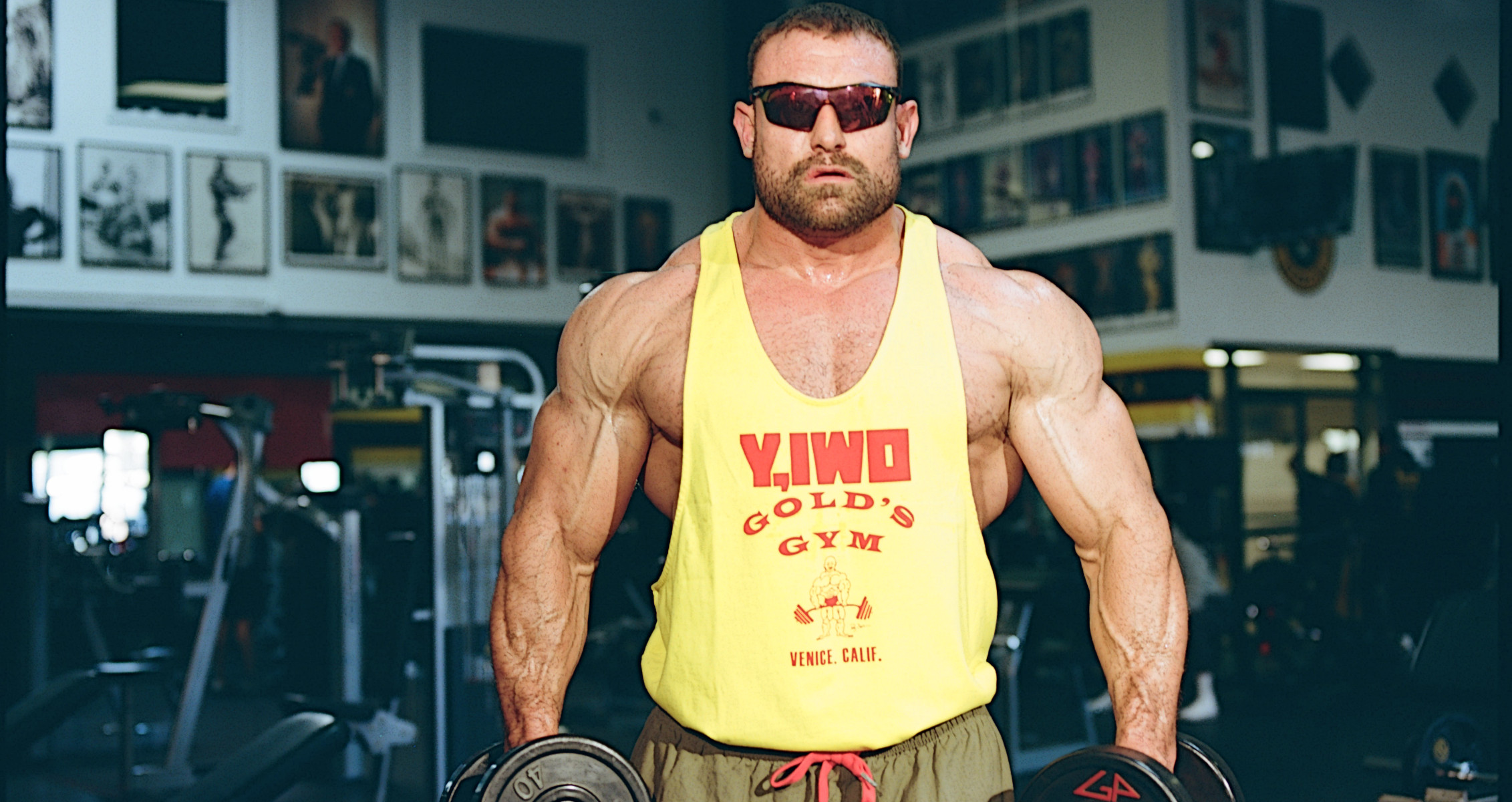
Bodybuilding Clothing Brand Y,IWO Teams Up with Gold’s Gym for New Collection
Y,IWO joins forces with Gold’s Gym.
It looks like the Y,IWO clothing brand is taking things to the next level. The bodybuilding apparel company has recently confirmed that they will be joining forces with Gold’s Gym. The two brands will collaborate to produce high quality bodybuilding clothing with a classic aesthetic.
As much as bodybuilding is about building massive, aesthetic, and powerful muscle, it’s also about style and attitude.
Fashion in particular in the bodybuilding space is an avenue many are enamored with. Finding clothes that fit a bodybuilder’s frame can be difficult. But the emergence of a new brand, dedicated to classic aesthetics, is changing the game.
A New Era of Bodybuilding Apparel
The Golden Era of bodybuilding in particular had it’s own unique style and flavor. The classic aesthetic of bodybuilding is so unique and iconic it’s pretty difficult to replicate in the modern era. At least that was the case until the emergence of Y,IWO.
Y,IWO AKA Yeah, I Work Out, is a clothing brand dedicated to bringing back that old school bodybuilding aesthetic. The brand has been garnering a ton of attention and has been growing strongly in popularity. It comes as no surprise that they’ve been able to broker a partnership with one of bodybuilding’s most recognizable gym franchises.
Y,IWO has now joined forces with Gold’s Gym to produce some high quality clothing. The collection will include clothes with a classic silhouette as well as the iconic Gold’s Gym logo. The logo was originally designed by the late, great Ric Drasin. An iconic bodybuilder of the Golden Era, Drasin also dabbled in other endeavors from wrestling to art. Alongside other legends like Arnold Schwarzenegger and Franco Columbu, Drasin trained day in and day out at the iconic Gold’s Gym Venice.
Jason Thome, founder and creative director of Y,IWO, had this to say about the new collection as well as Ric Drasin’s contribution to the Gold’s Gym legacy.
“Gold’s Gym’s rich history and Ric Drasin’s truly iconic artwork are a driving force behind the design and concept of the Yeah, I Work Out brand. So, we are beyond excited that our first-ever official brand collaboration is with Gold’s and that it gives us an opportunity to honor our friend Ric’s legacy as a true pioneer of bodybuilding culture.
“The collection includes bodybuilding staples using extra-premium, heavy duty fabrics and construction — Cropped tees, muscle pants, Y,IWO Quad Shorts, stringer tees, thermals –and a beach towel so you can work on your tan. All inspired by the old school classic colors and energy that we love from archival images of Gold’s, Arnold and Venice beach in the 1970s and 80s.”
Y,IWO Meets Gold’s Gym
The official Instagram of Y,IWO released an announcement about their collaboration with Gold’s Gym.
Y,IWO is beyond pumped to be collaborating with the legendary Gold’s Gym —taking you back to a time and place where workouts were serious, results were legendary, and livin’ was easy.⠀⠀⠀⠀⠀⠀⠀⠀⠀We are so stoked about this collaboration. Gold’s -the gym that produced the energy and vibe that inspired Yeah, I Work Out and countless other meatheads, gym bunnies and gym rats all around the world! FEEL THE PUMP!
To check out more of the Y,IWO clothing brand click here. What do you think of their new collaboration with Gold’s Gym?
For more news and updates, follow Generation Iron on Facebook, Twitter, and Instagram.
Managing Editor at Generation Iron, Jonathan Salmon is a writer, martial arts instructor, and geek culture enthusiast. Check out his YouTube, Instagram, Twitter, Facebook, and Sound Cloud for in-depth MMA analysis.
